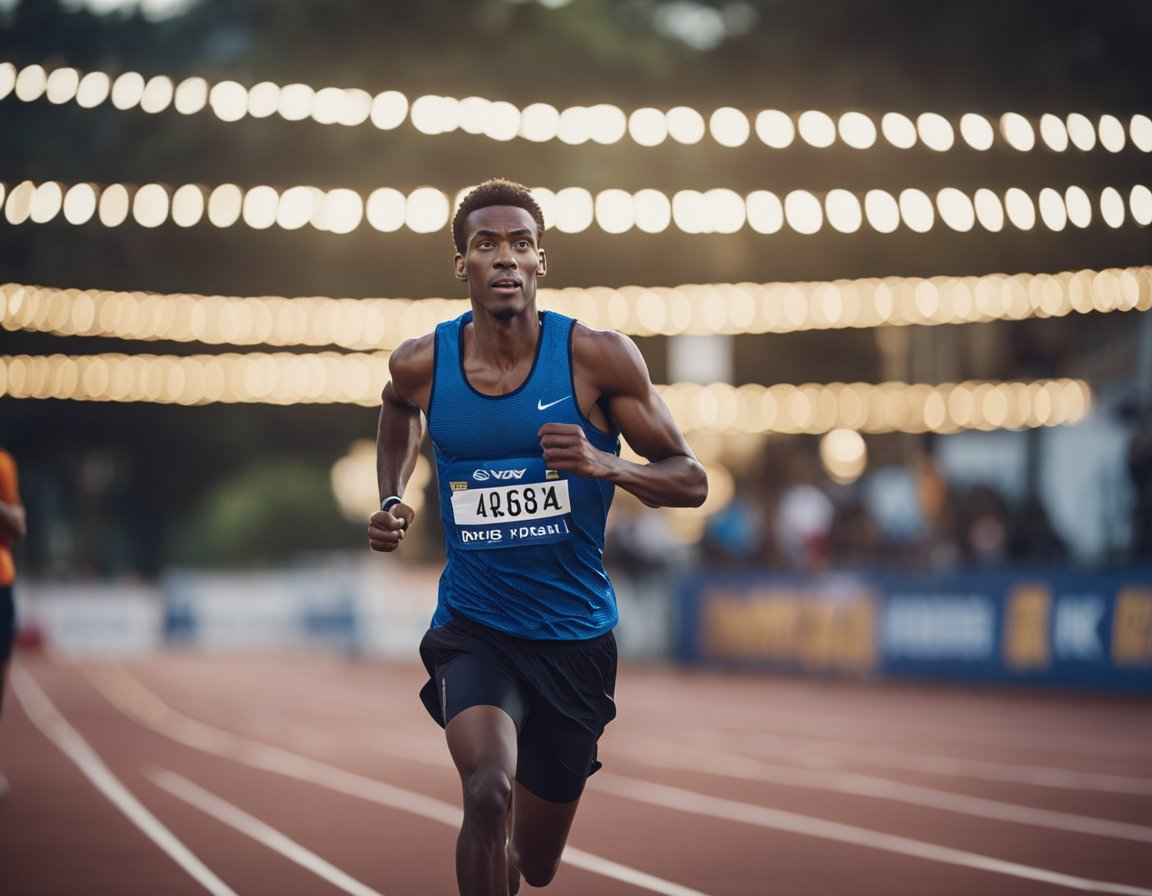Setting a personal best time in any activity takes dedication and a structured approach. Whether someone aims to run faster, swim quicker, or beat their cycling record, achieving peak performance starts with setting clear, realistic goals.
Athletes can achieve their personal best times by breaking down their main goal into smaller targets, tracking progress consistently, and following a specific training schedule with measurable milestones. This method helps people stay focused and maintain steady improvement toward their target time.
Every person can benefit from setting time-bound objectives that push their limits while remaining achievable. The right balance of challenge and realism keeps motivation high and reduces the risk of burnout or injury during training.
Determining Your Personal Best

Setting a personal best time requires accurately measuring and tracking current performance levels to establish meaningful targets for improvement.
Understanding Personal Bests
A personal best is the fastest time an athlete completes a specific distance or activity under standardized conditions. Accurate personal bests require consistent measurements and similar environmental factors like weather, terrain, and equipment.
Creating a personal best board helps track progress systematically. Athletes should record key details with each attempt:
- Date and time
- Weather conditions
- Route/course details
- Equipment used
- Physical condition
- Warm-up routine
Benchmarking Current Performance
Athletes need to establish their baseline performance through multiple timed attempts. The recommended approach is to complete 3-5 trials under similar conditions while maintaining consistent effort levels.
Regular progress reviews help identify patterns and adjust training as needed. Athletes should:
- Time each attempt precisely
- Record average pace
- Note the perceived effort level
- Track recovery time
- Document environmental factors
Recording these metrics creates an accurate picture of current capabilities and highlights areas for improvement.
Goal Setting for Personal Bests
Setting and tracking measurable targets helps athletes beat their previous records. A structured approach with clear timelines increases the chances of achieving new personal bests.
Setting Realistic Targets
SMART goals provide a proven framework for establishing personal best targets. Each goal needs specific numbers and metrics to track progress.
Athletes should analyze their current performance data and recent training history. This creates a baseline for improvement.
A target should stretch current abilities while remaining achievable. For example, a runner aiming to improve their 5K time should target 15-30 seconds faster than their current best.
Key factors to consider:
- Recent training consistency
- Previous rate of improvement
- Current fitness level
- Age and experience level
Creating a Timeframe for Achievement
The timeline for reaching a new personal best must align with the training cycle and target difficulty. Most performance goals need 8-12 weeks of focused training.
Breaking the timeline into phases helps track progress:
- Base building (3-4 weeks)
- Specific training (4-6 weeks)
- Peak performance (1-2 weeks)
Athletes should schedule regular time trials to assess their progress. This provides data to adjust training as needed.
Setting milestone targets along the way maintains motivation. Each small win builds confidence toward the goal.
Training Strategies

Smart training methods are key to achieving a personal best time. A mix of structured workouts, varied exercise types, and rest periods creates the ideal formula for peak performance.
Developing a Structured Training Plan
Setting SMART goals helps athletes track their progress effectively. A good training plan includes specific time targets and weekly mileage goals.
Training should follow a progressive pattern with 3 key workout types:
- Speed sessions (intervals, tempo runs)
- Long runs at a steady pace
- Easy recovery runs
Athletes must track their workouts using a running app or logbook. This data shows progress and helps them adjust training intensity as needed.
The plan must include a taper period 1-2 weeks before the target race. During this time, running volume decreases while maintaining some intensity.
Incorporating Cross-Training
Cross-training strengthens different muscle groups from running alone.
Effective cross-training activities:
- Swimming
- Cycling
- Strength training
- Yoga
Two to three cross-training sessions per week complement running workouts. Each session should last 30-45 minutes. Strength training focuses on leg and core exercises to improve running form and prevent injuries. Basic movements like squats, lunges, and planks work well.
Prioritizing Recovery
The body needs proper rest to adapt to training stress and prevent injury. Sleep plays a vital role in recovery, with athletes needing 7-9 hours per night.
Recovery techniques include:
- Foam rolling
- Light stretching
- Compression gear
- Ice baths
- Active recovery walks
Nutrition timing matters, too. Eating protein and carbs within 30 minutes after hard workouts helps muscles rebuild. Rest days are not optional. Schedule 1-2 complete rest days weekly, with no running or cross-training.
Persistent fatigue, decreased performance, and mood changes are signs of poor recovery. When these symptoms appear, athletes should adjust their training.
Performance Nutrition and Hydration
Proper nutrition and hydration are essential for achieving peak athletic performance. Athletes need specific fueling strategies to maximize their energy levels and maintain stamina throughout their events.
Optimizing Pre-Event Nutrition
The best pre-event meals contain a mix of complex carbohydrates and lean protein. Athletes should eat 2-4 hours before an event to allow proper digestion.
Creating an individualized nutrition plan helps prevent fatigue and performance plateaus. A balanced meal might include:
- Oatmeal with banana and peanut butter
- Whole grain toast with scrambled eggs
- Greek yogurt with berries and granola
The ideal carbohydrate-to-protein ratio for most athletes is 2:1. This balance helps maintain steady blood sugar levels during competition.
Staying Hydrated
Athletes must drink water consistently throughout the day, not just during exercise. Proper hydration before, during, and after activities improves performance.
Key hydration guidelines:
- Drink 16-20 oz of water 2-3 hours before exercise
- Consume 7-10 oz every 10-20 minutes during activity
- Replace 16-24 oz of fluid for every pound lost during exercise
Sports drinks can help replace electrolytes during events lasting more than 60 minutes. Plain water works well for shorter-duration activities. Creating a personalized hydration strategy based on individual sweat rates and exercise intensity leads to better performance outcomes.
Mental Preparation

The right mental state creates peak performance conditions. Mental strength and focus help athletes push past physical limits and achieve personal records.
Building a Positive Mindset
Mental toughness and endurance come from daily practice. Athletes need to replace negative self-talk with confident, empowering thoughts.
Set small, achievable goals to build confidence. Each completed goal reinforces belief in one’s abilities.
Daily habits nurture mental strength. Regular sleep schedules and short meditation sessions improve focus and reduce pre-race anxiety.
Keep a training log to track progress. Success leaves clues – reviewing past achievements boosts confidence before significant events.
Reviewing Progress Regularly
Athletes should use a digital fitness tracker, or training log to track their times and split data after each training session. This will help them see performance trends.
Key metrics to monitor include:
- Split times for different segments
- Heart rate zones during training
- Recovery periods between intervals
- Weekly mileage or training volume
Creating clear success criteria helps athletes measure their progress effectively. They can compare current performance against baseline measurements taken at the start of training.
Making Necessary Adjustments
Athletes must be ready to modify their approach when progress stalls or deviates from expectations. Small tweaks often work better than major changes.
Common adjustments include:
- Training intensity: Increasing or decreasing workout difficulty
- Rest periods: Modifying recovery time between sessions
- Training volume: Adjusting weekly mileage or duration
- Cross-training: Adding complementary activities


